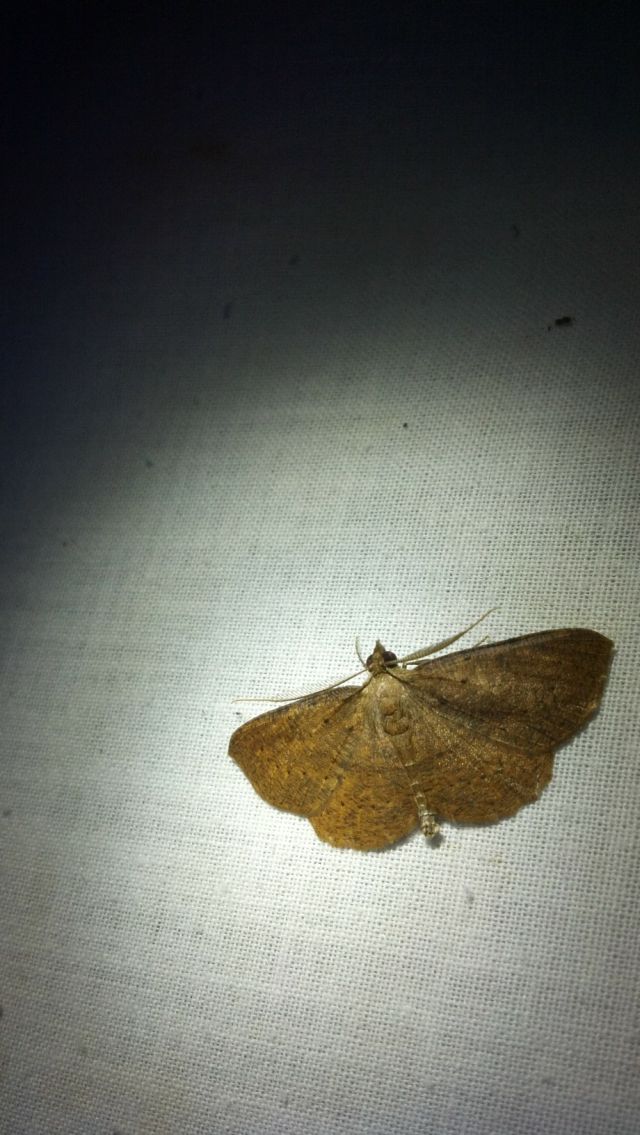Cynthia B. A. King, an entomologist working for the Native Invertebrate Program (Division of Forestry & Wildlife) in Hawaii, organized a NMW event on July 28th, 2012.

It was our understanding that one of the objectives of National Moth Week was to introduce the general public to the often unnoticed and under-appreciated beauty and diversity of moths. One could meet that objective by light-trapping for moths in a backyard or a nearby park, however, one of our goals for the Oahu moth week event was to share the excitement of introducing folks to some of our native moth species. Hawaii has over 850 species of native moths, in contrast to just two species of native butterflies. Unfortunately, due to extensive habitat destruction and alteration, and the introduction of non-native predators and vegetation, finding native moths is a little harder than it used to be. For our National Moth Week event, we ventured up into the Ko’olau Mountains to light trap in the Hawaiian wet forest along Poamoho Ridge Trail in the Ewa Forest Reserve (http://hawaiitrails.ehawaii.gov/trail.php?TrailID=OA+08+007).
To be sure, you can find moths in less remote areas, but we decided to take our Moth Week participants on a little adventure. The Poamoho Ridge Trail is open to the public, but one must first obtain a hiking permit from the State of Hawaii Dept. of Land and Natural Resources, Division of Forestry and Wildlife. Access is further hampered by a rugged 4×4 road to the trailhead.
The day of the event was blustery and rainy. We arranged for access permissions and transportation in DOFAW vehicles, such that 15 members of the public were able to participate in the event. We had a total of 14 adults and 4 young adults. As we drove up to the trailhead we saw one of the most vibrant double rainbows any of us had ever seen. Rainbows are usually a welcome sight, but this one was rather ominous: set in front of a mass of dark storm clouds which hung right over our light trapping destination. As it turned out, it wasn’t the rain that we needed to worry about.
Once we arrived at the trailhead and hiked into our site, we set up two sheet light traps and began our watch. We were grateful that the rain had subsided, but disappointed when we realized how strong the winds were gusting. There is nothing worse that high winds when you’re sheet trapping! The moths that are drawn into the light try to settle on the sheet, but eventually get catapulted off by the gusts. As a consequence, our light traps had very little steady visitation by moths or other arthropods.

Photo: Lance Tanino
Despite the poor conditions, we were lucky to observe at least two species of native koa moths (Geometridae: Scotorythra), which feed on Koa trees (a common, and iconic hardwood species). Other notable moths included a small sphinx moth, and some microlepidoptera that we were unable to identify. Our participants also had a lot of fun hiking back and forth along the trail between the two traps with just their headlamps to guide them. Night hiking is something that lepidopterists take for granted, so it’s easy to forget what a fun and unique experience it is for those who don’t do it regularly – especially when the night hiking is in a beautiful, remote field site like Poamoho Ridge Trail.
We consider our National Moth Week event to be a great success. We accomplished our goal of getting some folks exposed to beautiful native moths that they would not have otherwise seen, in a place they might never have otherwise visited. And more importantly we have even more people asking about how it went, and where we’re going next year!